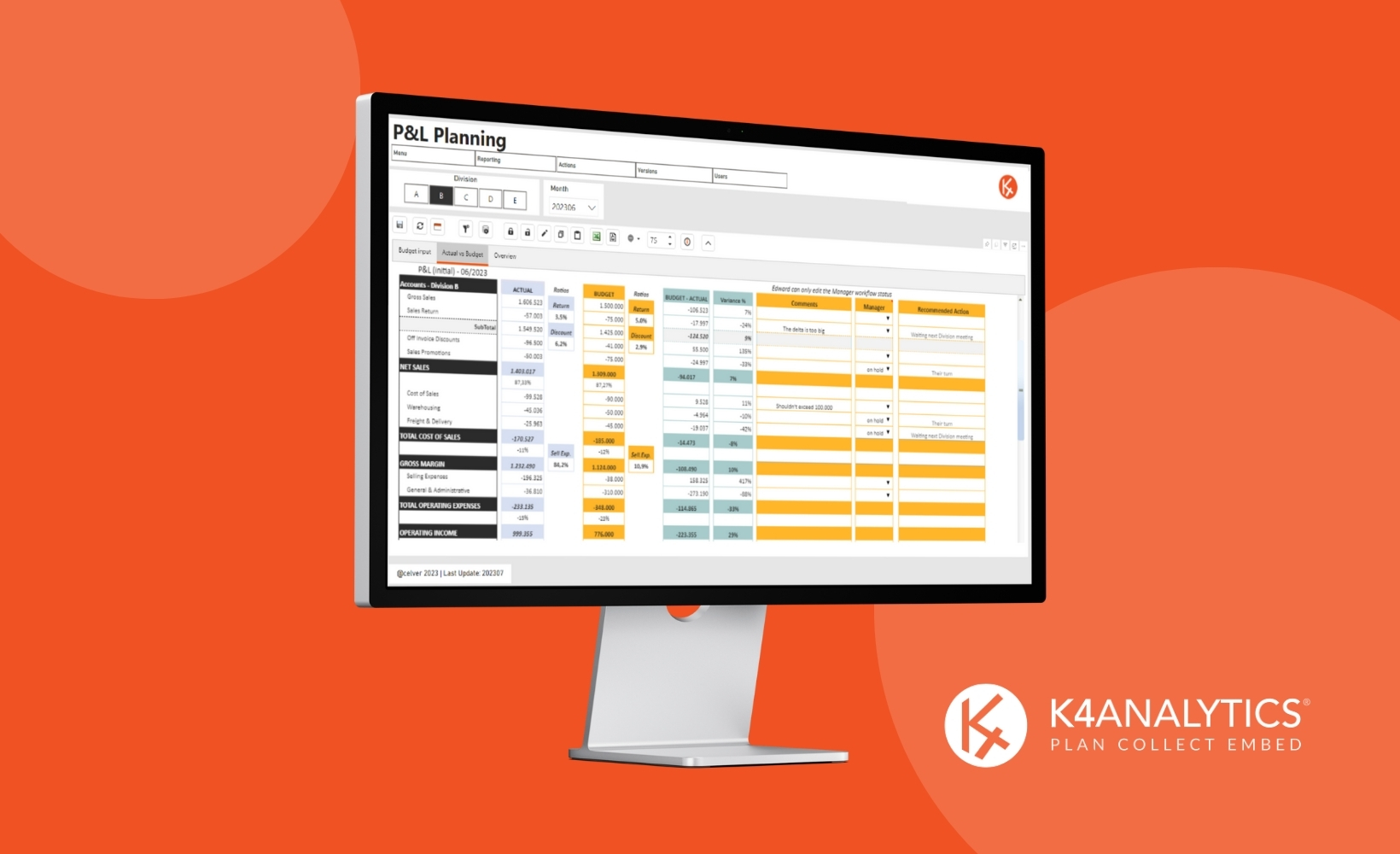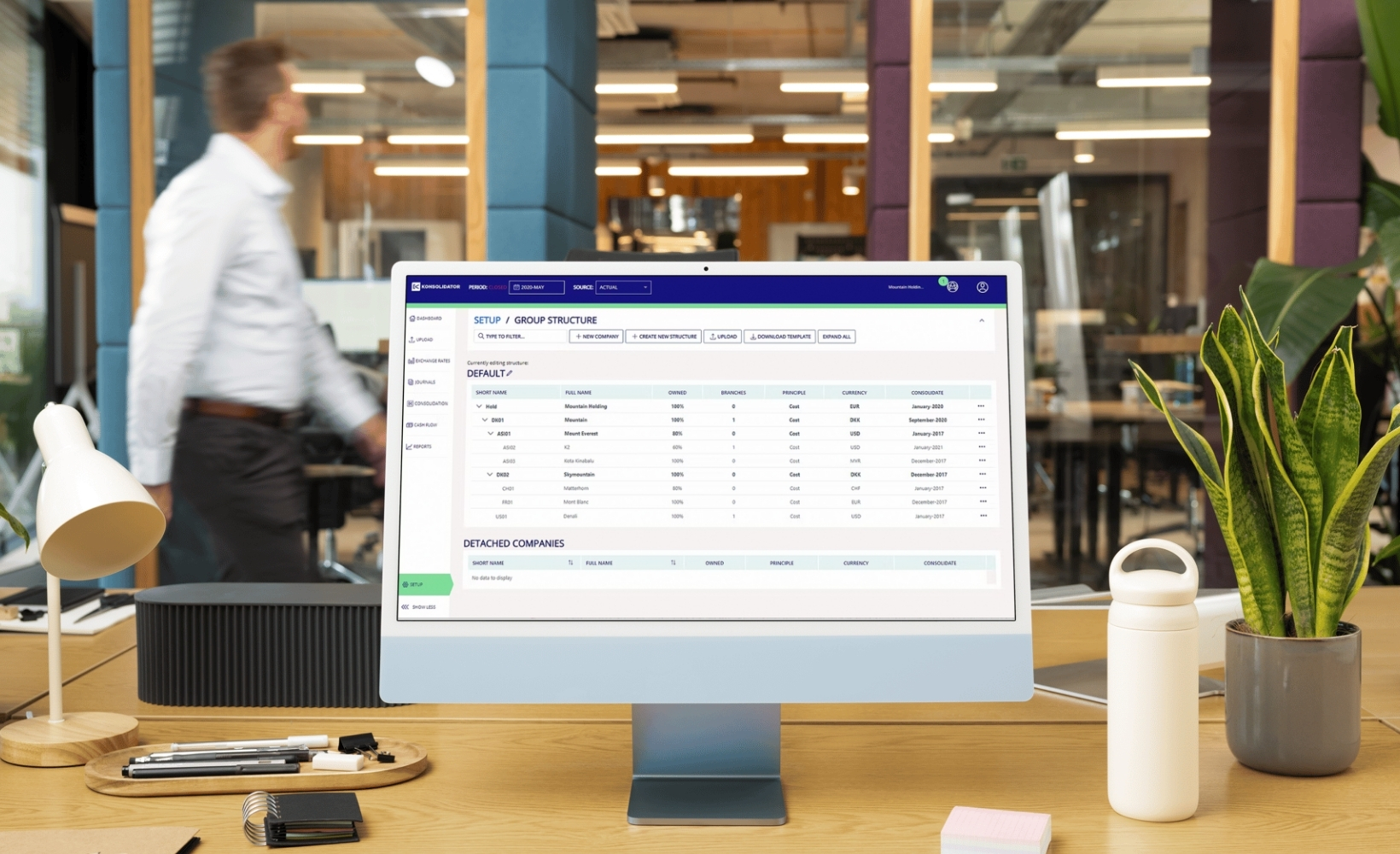There was a time when static, assumption-based planning was sufficient to work through the year. But that time has passed, and finance teams and managers today need new systems that offer greater flexibility and the ability to replan in real time.
Traditional planning systems lose their effectiveness when there are fluctuations in the market, in periods of change or when faced with events of international impact. That is, in the new normal, “thanks” to legislative and governmental changes, wars, pandemics, climate crisis, economic instability, new competitors, etc.
To stay ahead of the curve you need more agile planning, and this is where the rolling forecast comes in.
What is Rolling Forecast?
Rolling forecast allows to have a more probable forecast of future results thanks to a re-estimation of the budget.
Unlike the annual budgets that many organizations prepare at the beginning of the year, which are a “static” snapshot, the rolling forecast uses available data from the current year to extrapolate and update the budget more accurately.
This process, usually performed by the controlling or financial team, can be carried out during the year in order to readjust the forecasts for the remaining months, taking into account information from previous months. In this way, the company has room for maneuver to take measures that will help it to achieve the expected objectives.
According to data from FSN’s Agility in Planning, Budgeting and Forecasting (PBF) Survey 2021, only 43% of organizations manage to forecast their revenue with a deviation of less than 5%. In addition, 52% of organizations say they are unable to plan beyond 6 months ahead.
This data shows how important it is today to have agile tools that allow companies to stay competitive and on budget, and rolling forecasting is a key part of this.
What is the difference between a rolling forecast and a traditional forecast?
The traditional budget made at the beginning of the year usually includes an income statement forecast. This static plan reflects where the company wants revenues and expenses to be at the end of the year, which is used to allocate resources, define which products or services will need to be promoted or where investments will have to be made.
The main problem with the traditional budget is that it is fixed, it does not “react” to everything that happens during the year. This turns out to be very limiting, since the annual budgeting process in many companies is a long and tedious process that can take several weeks.
In addition to this, there are other problems, such as the fact that the business units that provide the information on which this budget is based may be tempted to give lower forecasts if they know that these are going to be used as targets. This has a negative impact as it reduces the accuracy of the forecasts and causes revenue to trend downward.
Rolling forecasting solves many of these problems by allowing forecasts and resource allocation to be readjusted based on what is happening. It gives managers a view of how the current year will close or, if not restricted to business years, a 12 (or 6, 8, 18, etc.) month view at any point in the year.
Automating the rolling forecast: a competitive advantage.
Rolling forecasting is important, but it is even more important to do it efficiently.
If your organization’s financial processes involve reviewing and updating dozens of different Excel spreadsheets, making a rolling forecast can be a headache that can take days or weeks.
However, performing this process with a good solution implemented on a robust platform is a fast and agile process that can be solved in a few hours by the controlling team, even by creating different versions or scenarios.
The automation of the rolling forecast allows a company to have a monthly estimate of how the year will close or a 12-month forecast. The key to this is to have a process that, using various statistical methods, allows the actual data for each of the items on the income statement to be extrapolated to future months. These are simple and modifiable methods that make it possible to calculate in a very agile way how each accounting item will evolve, both in terms of expenses and income.
This information makes it possible to make decisions within the period based on the evolution of the data, for example:
- Confirm that the line item follows the trend of actual data for future months.
- Force the line item to meet the budget to close the year (therefore in the open months you must “compensate” for what has not been achieved in the actual months already closed).
- Or, as a last example, calculate the Budget Vs Actual difference of the already closed months for that line item and apply the same criteria to the open months.
In short, rolling forecast processes are a very agile way of estimating non-closed months efficiently, allowing you to go to item-by-item detail if you wish, and even enter values manually if necessary.
If you still think that traditional budgets are enough, think of all the advantages that rolling forecast offers.
Advantages of rolling forecast.
- More accurate forecasts.
When the time finally comes when you have finished preparing the annual budget, it is already obsolete. The rolling forecast allows you to make adjustments on the fly instead of forcing you to anticipate what the year will be like with a single forecast.
- Greater agility in decision making and readjustments.
The rolling forecast allows you to modify and adapt the forecast based on changes, trends or unexpected events in an agile way, which means that your organization will respond better and in a shorter period of time.
In addition, you will have a forecast for 6, 12, 18 or the months you decide, having useful and updated information whenever you need it instead of just once a year.
- More information to make better decisions.
You will be able to make decisions based on dynamic metrics that evolve throughout the year, not only looking at past data. Reviewing the main KPIs throughout the months helps to improve the quality of forecasts. In addition, several scenarios can be generated with different hypotheses, allowing the management team to compare how different causes will affect the company’s year-end closing.
- Reduced planning times.
Automated rolling forecast processes help shorten planning times, which can be months in the case of traditional annual planning. In addition, rolling forecast planning can always be updated again as new information becomes available from departments.
Do you want to implement an efficient rolling forecast system?
If your organization is looking to make the leap and leave behind the tedious spreadsheets to effectively integrate the rolling forecast within the planning processes, Holistic Data Solutions can help you.
Implementing a custom-developed solution will facilitate your financial planning processes and help you in other analysis and decision-making functions, while speeding up and shortening the time required for its implementation.
Contact us and we will tell you how we can help you improve your financial planning.
Related Articles
In a context like the current one where financial instability and market volatility are so present, it is normal that [...]
Board International was founded in the 1990s with the aim of being a Self-Service Analysis and Reporting, which goes through [...]
Time and money. If we were to carry out a market survey and ask finance directors, entrepreneurs or heads of [...]
















